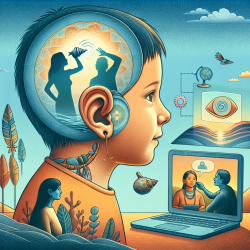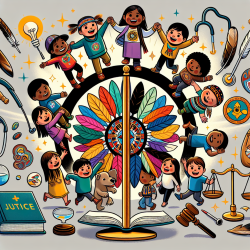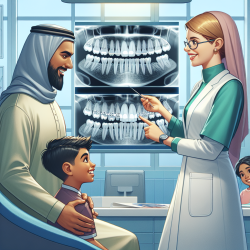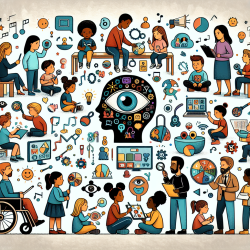Introduction
As practitioners in the field of special education and therapy, understanding the nuanced relationship between ear health and language development is crucial. The recent research article, "Parent Perspectives of Ear Health and the Relationship with Children’s Speech and Language in the Longitudinal Study of Indigenous Children," offers valuable insights into this dynamic, particularly among Aboriginal and Torres Strait Islander children. This blog aims to explore the findings and suggest practical applications for enhancing therapy services.
Understanding the Research
The study highlights the significant impact of ear health on speech and language development in children. It specifically examines parent-reported ear symptoms and their correlation with concerns about expressive and receptive language skills. The research indicates that children without reported ear symptoms between the ages of two and five had lower odds of parental concern regarding their speech and language skills at ages five to six.
This finding is particularly relevant for Indigenous children, who experience higher rates of otitis media, a condition that can lead to temporary or chronic hearing loss. The study emphasizes the need for culturally safe, family-centered, and strength-based approaches to speech, language, and ear health services.
Practical Applications for Practitioners
For practitioners, these insights can be transformative in several ways:
- Early Intervention: Prioritize early screening for ear health issues in children, particularly in Indigenous communities. Early detection and treatment of conditions like otitis media can prevent potential speech and language delays.
- Culturally Sensitive Practices: Develop and implement therapy programs that respect and incorporate the cultural and linguistic diversity of Indigenous families. This includes using culturally relevant assessment tools and involving family members in the therapeutic process.
- Holistic Approach: Consider the broader social determinants of health, such as socioeconomic status and access to healthcare, when designing intervention strategies. Addressing these factors can improve overall outcomes for children.
- Continuous Education: Stay informed about the latest research and methodologies in the field. Engaging with ongoing studies and professional development opportunities can enhance your practice and benefit the children you serve.
Encouraging Further Research
While this study provides valuable insights, it also highlights the need for further research. Practitioners are encouraged to explore additional studies on the relationship between ear health and language development, particularly those that focus on diverse populations. Collaborating with researchers and contributing to longitudinal studies can help build a more comprehensive understanding of these issues.
Conclusion
The connection between ear health and language development is a critical area of focus for practitioners working with Indigenous children. By implementing the findings from this research, practitioners can enhance their skills and provide more effective, culturally sensitive therapy services. For those interested in delving deeper into the study, the original research paper is available for further reading.
To read the original research paper, please follow this link: Parent Perspectives of Ear Health and the Relationship with Children’s Speech and Language in the Longitudinal Study of Indigenous Children.










